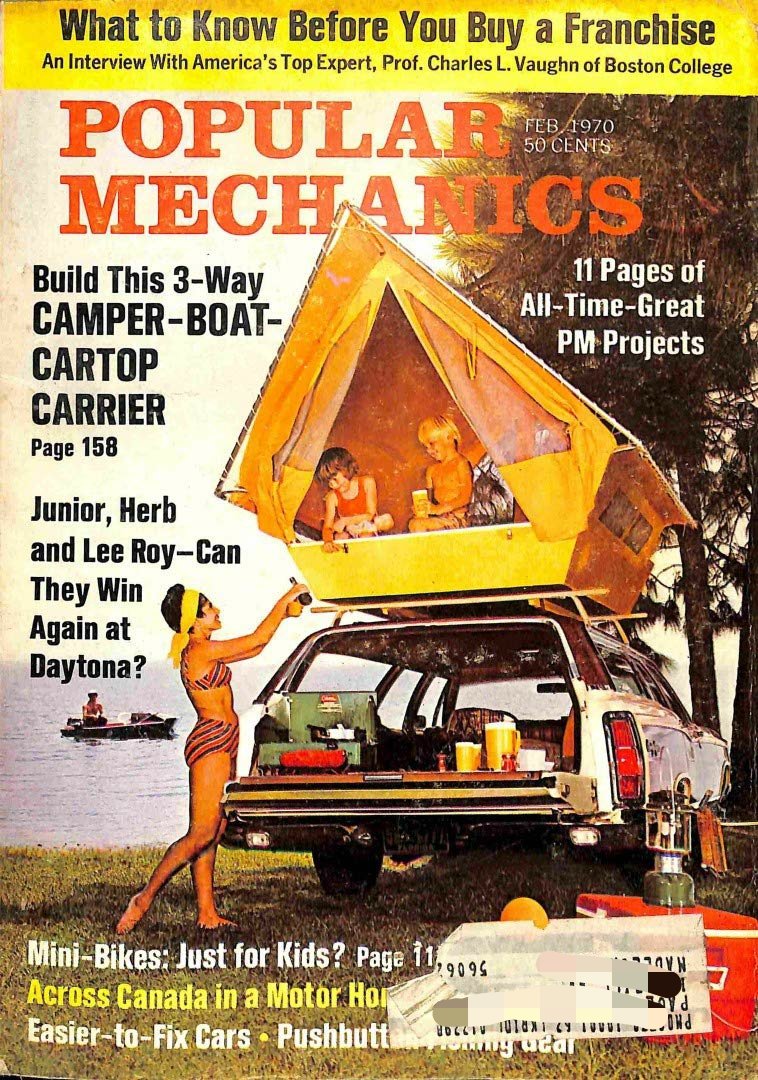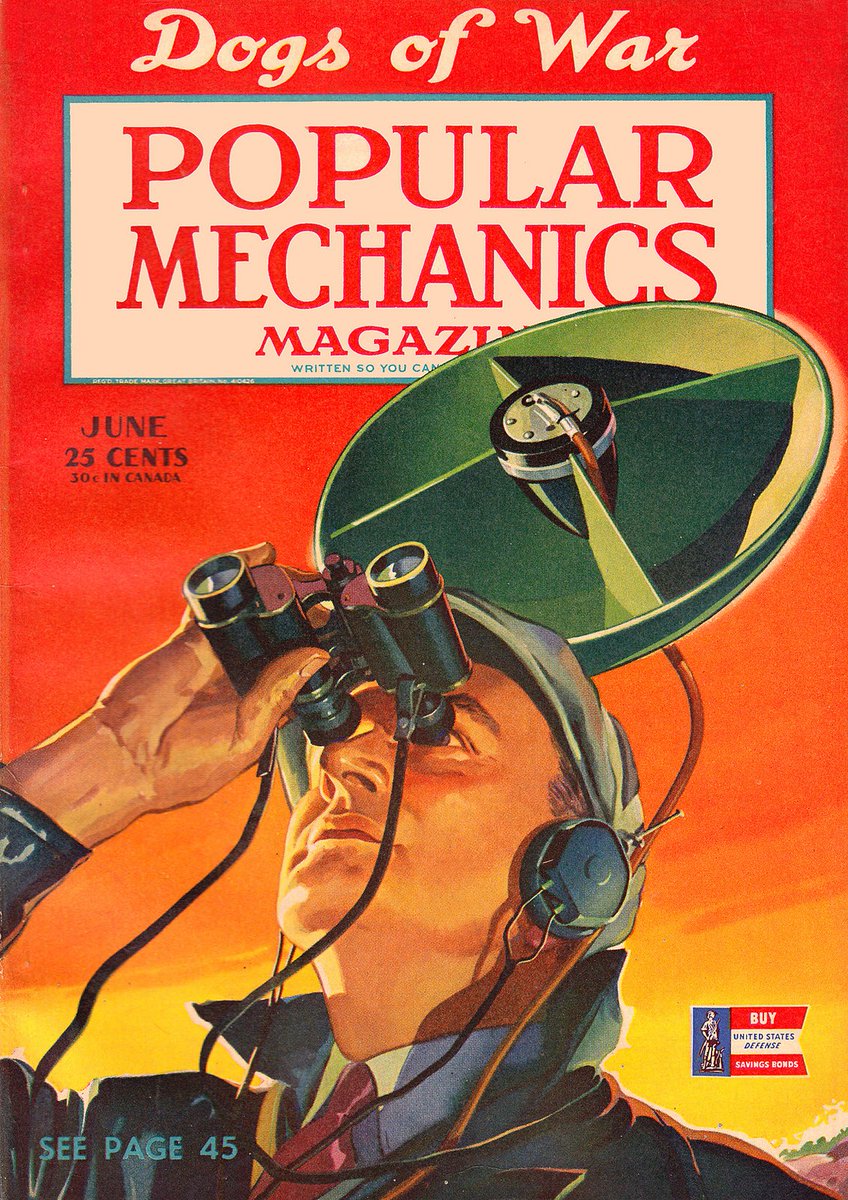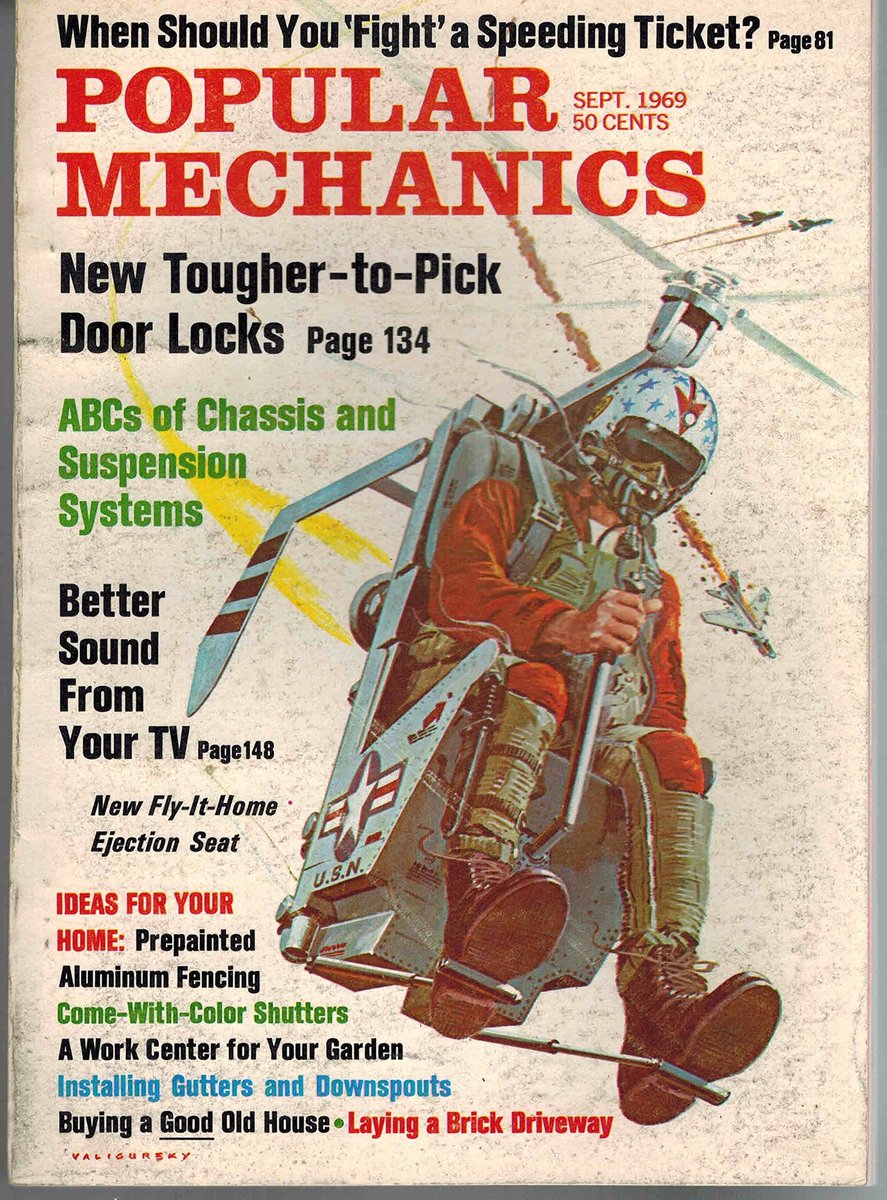Time for a pulp countdown now, so here's my top 10 future inventions we were promised by Popular Mechanics magazine that we're still waiting for! 

At #10: motorised unicycles! This was a very popular Edwardian idea inspired by the penny farthing bicycle. Although a few prototypes were made we never really fell in love with driving one big wheel. Also: not great in the rain. 

At #9: personal radar. Now this is actually a pretty neat idea and a number of cars now use radar or lidar as an anti-collision aid. However we're still waiting for it to be built into a hat. 

At #8: the ion drive. Some space probes do use this as an efficient incremental mode of propulsion. Getting it to power flight on Earth is a bit trickier. 

At #7: wearable gyrocopters. More powerful than jetpacks the concept certainly works, but it's still a solution in search of a problem. Oh, and deafeningly loud! 

At #6: airships for everyone. The airship is the quintessential pulp mode of transport and modern blimps are pretty safe. But we still don't like to travel by gasbag, no matter how sustainable it may actually be. 

At #5: aero tugs. Having one aircraft transport another one can make sense: it's certainly one way to crack the problem of single stage to orbit flight. Virgin Galactic are the only current takers though. 

At #4: rocket-assisted vehicles. It's a neat way to manoeuvre a truck on tricky terrain, or to break a speeding car quickly, but putting rockets on cars is probably going to cause more problems than it solves. 

At #3: recreational helicopters. The 1950s was the heyday of recreational flight ideas; soon we would all vacation in the Sikorsky RV. However we still stubbornly refuse to embrace the chopper as a flying Winnebago. It's hard enough towing a caravan! 

At #2: monorails. Why we still think this is futuristic is beyond me. It's certainly not faster than traditional rail and apart from shuttling people around theme parks or airports it's remained a niche proposition. 

And of course, at #1: flying cars! We've been promised this for so long that I'm beginning to think it will never happen. 

• • •
Missing some Tweet in this thread? You can try to
force a refresh
























